If you want to annoy artists and public art managers, then just show comparable works in the world that suggest the new artwork is not very original. But like architecture, automotive design and a million other elements on our universe, is it realistic to be “unique” in the world. Or perhaps unique has become more like a “unique face” – not really very unique, but has a little something that appears special as this moment. A moment when you have forgotten the other similar ones or have not met the similar people.
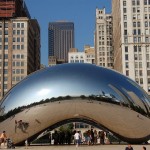 Is “unique” a goal of public art or architecture or television. For television, repetition on a successful formula seems the main method of new show creation. Automobiles today are so similar I cannot tell one from the other except basic type such as SUV, sedan, etc. Most of us in our daily purchases, acquire the normal – shoes, shirts, chairs – but hopefully in a classy way. That is CLASS. Hoping to get the combinations and signals right as established in the media and advertising for your self identified CLASS. Or a for a few in urban undergrounds and urban uppergrounds, as habit in their neighborhoods.
Is “unique” a goal of public art or architecture or television. For television, repetition on a successful formula seems the main method of new show creation. Automobiles today are so similar I cannot tell one from the other except basic type such as SUV, sedan, etc. Most of us in our daily purchases, acquire the normal – shoes, shirts, chairs – but hopefully in a classy way. That is CLASS. Hoping to get the combinations and signals right as established in the media and advertising for your self identified CLASS. Or a for a few in urban undergrounds and urban uppergrounds, as habit in their neighborhoods.
I think we have emerged from the 19th & 20th century’s amazing transformations when so much was invented and implemented and re-invented and implemented and modified and implemented and………….. until the product settled into its standard characteristics. In those centuries, we also destroyed all traditional diversity of human cultures. Less uniqueness remains among human culture and our objects than since Lucy walked the earth. (A little too much, but you get the idea).
So when art is bought or commissioned for cities, worldwide uniqueness is not the goal even if some 19th century romantic and 20th century advancement ideas float in the mind. The administrators and curators and patrons want the work to be like other work. They desire the relationship to art in other places – physical or virtual. Although typically not in the same town. Just in the state, country or globe.
Artists will never really copy as we would not call them artists, but forgers. Artists remake and recombined from their memories and their working accidents. We judge. Did they do it well? Was the performance exciting? Do the heart jump? In effect, were they a great craftsman? With the acceptance of both ideas and daily actions as artistic mediums, are not we looking for the craft? What is left that is not craft?
So for a few entries, I will examine some works that are based on existing works. This is always my opinion, not the necessarily the artist’s source. KA Studio and Joe O’Connell + Blessing Hancock sculptures are making sculptures this year based on Anish Kapoor’s Cloud Gate. Please send me other examples.
Cloud Gate, Anish Kapoor, Chicago, 2006. Polished stainless steel. 60 feet long and 33 feet tall.
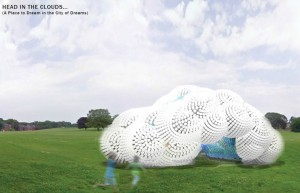
Head in the Clouds, Studio KA, Figment Festival, Governor’s Island, New York City, Temporary in June 2013. 40 feet long and 15 feet tall.
Head in the Clouds, Studio KA, Figment Festival, Governor’s Island, New York City, Temporary in June 2013. 40 feet long and 15 feet tall. 53,780 recycled plastic bottles held-up on an aluminum frame.
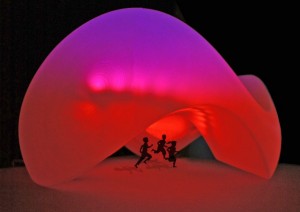
Cloud Ring, Joe O’Connell + Blessing Hancock Under Fabrication for Installation in Calgary, Canada. 28 feet long and 15 feet tall.
Cloud Ring, Joe O’Connell + Blessing Hancock, Under Fabrication for Installation in Calgary, Canada. 28 feet long and 15 feet tall. Computer controlled LED lighting inside an acrylic shell.
And for fun, a real cloud.
Blur, Diller Scofidio + Renfro, Yverdon-les-Bains, Switzerland, Temporary in 2002, 300 feet wide by 75 feet tall. Steel and 31,500 high-pressure mist nozzles.
Here is the completed Figment Project. More images here
- Studio Klimoski Chang Architects’ Head in the Clouds at FIGMENT 2013
- Studio Klimoski Chang Architects’ Head in the Clouds at FIGMENT 2013
- Studio Klimoski Chang Architects’ Head in the Clouds at FIGMENT 2013
————————————————————————————————
Reply from Joe O’Connell, Artist of Cloud Ring
————————————————————————————————
Thanks for featuring our upcoming sculpture Cloud Ring in your blog and for giving us a heads up.
We respect that the blog reflects your opinion and appreciate that you clearly elucidate that fact. However, your entry does state that our concept is based on Anish Kapoor’s Cloud Gate in a way that implies this is a matter of fact. The title of your blog suggests that it is a copy. Perhaps it is a question of semantics, but the statement seems opportunistic and inflammatory in an unproductive way. We welcome the opportunity to discuss our work in depth, which is the main driver behind this response.
There is no denying that our Cloud Ring has a similar outward form. However, both its shape and name have site-specific sources. The ring shape is derived from the shape of the Beltway neighborhood and a ring-shaped walking track that is the main feature of the new Beltway Park in which it will be installed. In addition, the form (and the name) come from the Chinook cloud phenomena where sharply defined clouds with curved edges appear quickly over the nearby mountains, descend and cause dramatic temperature changes. Through this view, the piece is very literally a manifestation of a ring of clouds. Here is a link to a representative photo of the natural phenomena: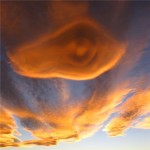
Also, to divorce the form completely from the experiential affect of its materials misrepresents both pieces. We would argue that the power behind both Cloud Ring and Cloud Gate derives from (to borrow a term from architecture) the phenomenological effect of their materials (reflective steel vs. glowing acrylic). Cloud Gate is about reflection; Cloud Ring is about translucency and seeing internal structures. Therefore, it seems superficial to call one derivative of another based exclusively on outward form (and, we suspect, a convenient title) alone. It would be akin to saying that Tara Donovan’s Toothpicks is derivative of Hans Haake’s Condensation Cube since they are both cubes (although maybe it would be more convenient if she had named it Toothpick Cube).
Cloud Ring was one of three very different ideas we presented to the Calgary community in model form. They chose Cloud Ring and they did so partly because they were very attracted to Desert O – a glowing ring-shaped sculpture we installed in 2004 (picture attached). Cloud Ring is a further iteration of that formal and material approach – something we began before Cloud Gate went public – not an attempt to replicate other artists’ work. Through a parallel lens, one could easily argue that these pieces are in dialogue with one another exploring the intersection between natural systems and man-built forms. This positive perspective makes for less gripping blog posts but leads to a deeper insight into the process by which artists are in dialogue with each other and the public.
Anyway, thanks for the attention. Perhaps you would like to feature us in a followup and post some of the attached images. Ultimately, you are right when you say “We judge.” The final word on Cloud Ring will be neither yours nor ours but the people of Calgary. And for that we need to wait until later this year. We invite you to revisit the project at that time.
—
Joe O’Connell
Creative Machines Inc. | 3113 East Columbia Street | Tucson, AZ 85714
phone: 1-800-861-7937 | 520-294-0939 | fax: 520-294-0939 | email: joe@jbpublicart.com
http://www.jbpublicart.com
Attached detailed PDF of design: Cloud Ring 90% Concept (dragged)
————————————————————————————————
Response from Glenn Weiss
————————————————————————————————
Joe,
Thanks for long and thoughtful description.
Many, many differences exist between your work and Anish Kapoor. And KA Studio. I actually said nothing about any of the four works.
You did invite the comparison by voluntarily naming your work “Cloud Ring” and utilizing the “Cloud Gate” lift that permits people into the center. My point is that nothing is wrong with the relationship. Your work will be different and still owe a little something to Kapoor. I like the memory of one work inside the memory of another.
Given your inspiration from actual clouds, you may have liked the post title “Copy Clouds” if I had not referenced other works. Or placed “Blur” at the top. I live in the south Florida and the clouds are beautiful all summer long. The best in the world in my opinion.
Glenn Weiss
Utilizing titles as a method of comparison is risky. Tomas Saraceno’s “Cloud City” owes little to “Cloud Gate” except the phenomena of using polished stainless steel to bring the sky and people into the sculpture.

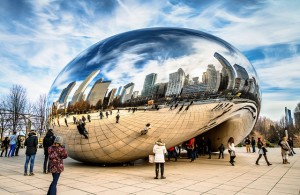
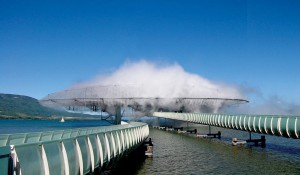
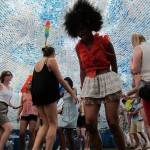
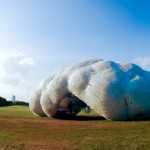
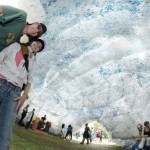
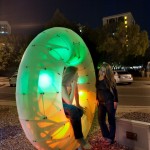
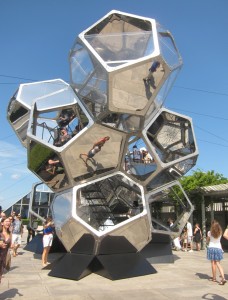
I was just at the Anthropology Museum in Mexico City, and there is no doubt that EVERY idea in modern sculpture, glassblowing, jewelry, comics, ceramics, woodcarving, stone, architecture, and urban planning was done by the early inhabitants of Mexico, some of it as long as 4000 years ago.
So why even try?
As Mark Twain once said- “I hate the Greeks- they already stole all the good ideas”.
My personal motto as an artist is- Everything has been done before- just not by me.
In other words, I am not bothered by surface resemblance between artworks- what is important is how it is executed, how it fits its location, and how much soul it has.
This artist is amazing… I found great pictures of Anish Kapoor’s Cloud Gate in Art Days, here is the link! http://www.art-days.com/cloud-gate-anish-kapoor/ Enjoy! 🙂